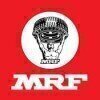

Aia Engineering




10+ Aia Engineering Maintenance Engineer Interview Questions and Answers
Q1. What are the methods for measuring with a micrometer and a vernier caliper?
Methods for measuring with a micrometer and a vernier caliper
For micrometer: Close the jaws gently around the object being measured, read the measurement from the scale, and add any additional measurements from the thimble.
For vernier caliper: Close the jaws around the object, read the main scale measurement where the zero mark on the vernier scale aligns, then add the vernier scale measurement for precision.
Ensure the objects being measured are clean and free from debris to ...read more

Q2. What are cope and drag in the context of casting processes?
Cope and drag are the two halves of a mold used in casting processes to create a cavity for the molten metal.
Cope is the top half of the mold, while drag is the bottom half.
The cope and drag are typically made from sand and are used to create a cavity in which the molten metal is poured.
After the metal has solidified, the cope and drag are separated to reveal the casting.

Q3. What is the difference between pneumatic and hydraulic systems?
Pneumatic systems use compressed air to transmit power, while hydraulic systems use fluid (usually oil) to transmit power.
Pneumatic systems use air as the working fluid, while hydraulic systems use oil or other fluids.
Pneumatic systems are generally cleaner and easier to maintain than hydraulic systems.
Hydraulic systems can handle higher loads and pressures compared to pneumatic systems.
Pneumatic systems are often used in applications where cleanliness is important, such as i...read more

Q4. What are the different types of bearings and their applications?
Different types of bearings include ball bearings, roller bearings, plain bearings, and fluid bearings.
Ball bearings are used in applications requiring low friction and high speed, such as in wheels and conveyor belts.
Roller bearings are suitable for heavy radial loads, such as in automotive transmissions and industrial machinery.
Plain bearings, also known as bushings, are used in applications where lubrication is difficult, such as in hinges and pivots.
Fluid bearings use a t...read more

Q5. What are the defects associated with the casting process?
Defects in casting process include porosity, shrinkage, cold shuts, misruns, and inclusions.
Porosity: air or gas trapped in the casting
Shrinkage: volume reduction during solidification
Cold shuts: incomplete fusion of molten metal
Misruns: incomplete filling of the mold cavity
Inclusions: foreign materials trapped in the casting

Q6. What are the different types of cylinders?
Different types of cylinders include single-acting, double-acting, telescopic, and impact cylinders.
Single-acting cylinders: Operate in one direction using fluid pressure to extend or retract the piston.
Double-acting cylinders: Use fluid pressure to extend and retract the piston in both directions.
Telescopic cylinders: Consist of multiple nested stages that allow for a longer stroke length in a compact design.
Impact cylinders: Designed to deliver a high force in a short amoun...read more

Q7. What are the different types of heat exchangers?
Heat exchangers are devices used to transfer heat between two or more fluids, without mixing them together.
Shell and tube heat exchanger
Plate heat exchanger
Double pipe heat exchanger
Finned tube heat exchanger
Spiral heat exchanger

Q8. What are the types of sand used in casting?
Types of sand used in casting include green sand, resin sand, shell mold sand, and sodium silicate sand.
Green sand: most commonly used type, made of silica sand mixed with clay and water
Resin sand: mixed with resin and hardener for better surface finish and dimensional accuracy
Shell mold sand: uses a resin-coated sand that is heated to form a shell around the pattern
Sodium silicate sand: uses sodium silicate as a binder, good for large castings and high-temperature applicatio...read more

Q9. What is the process of casting?
Casting is a manufacturing process in which a liquid material is poured into a mold, where it solidifies into the desired shape.
Melted material is poured into a mold
The material solidifies and takes the shape of the mold
The mold is then removed to reveal the final product

Q10. What is the heat treatment process?
Heat treatment is a process used to alter the physical and sometimes chemical properties of a material through heating and cooling.
Heat treatment involves heating a material to a specific temperature, holding it at that temperature for a certain amount of time, and then cooling it at a controlled rate.
The process can be used to increase the hardness, strength, toughness, and ductility of a material.
Common heat treatment processes include annealing, tempering, quenching, and c...read more





Interview Process at Aia Engineering Maintenance Engineer

Top Maintenance Engineer Interview Questions from Similar Companies






Reviews
Interviews
Salaries
Users/Month












